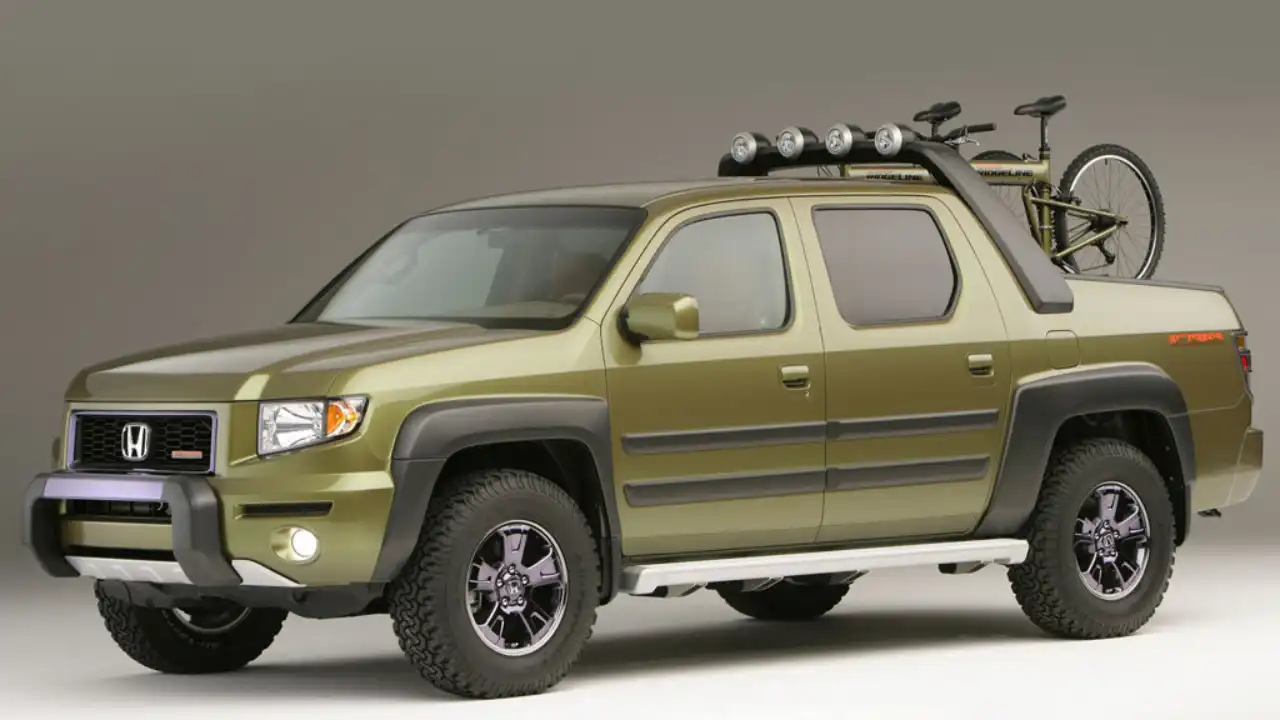America is known as the land of the free and the home of the pickup truck. Whether it’s compact, mid-size, full-size, or heavy-duty, the country has embraced all varieties.
Pickup trucks are currently enjoying massive popularity, so much so that Hyundai entered the market with the Santa Cruz, and even Mercedes-Benz once had a pickup truck in production, although it was discontinued by 2020.
In the compact truck segment, Hyundai and Ford are leading the way with the Santa Cruz and Maverick, respectively. In the mid-size category, the Toyota Tacoma is dominating in sales, while the Chevrolet Colorado is close behind.
However, the title of the most sold pickup truck and in fact, the most sold vehicle overall in the United States belongs to the Ford F-150.It remains the most popular pickup truck of all time, and Ford continues to enhance it with the latest mid-generation refresh.
5 Trucks With Low Cost of Maintenance
That said, pickup trucks can sometimes come with steep price tags. A fully loaded Platinum Plus F-150 costs \$84,495 after delivery (and that’s not even including dealer fees and taxes).
The GMC Sierra can top that price by about $2,000. So, if you’re in the market for a dependable Work Truck that doesn’t cost as much as a high-end BMW or Mercedes-Benz, we’ve got you covered.
5. 2017 Nissan Frontier
KBB Fair Purchase Price: $15,604
We’re now moving into more budget-friendly territory, beginning with the 2017 Nissan Frontier. This model actually offers a surprising amount of off-road capability thanks to features like skid plates, a locking rear differential, and more.
Like many mid-size pickup trucks, it’s available with either a four-cylinder or six-cylinder engine. It also boasts a maximum towing capacity of 6,500 pounds.
According to RepairPal, this model has the lowest annual maintenance costs among the options considered.
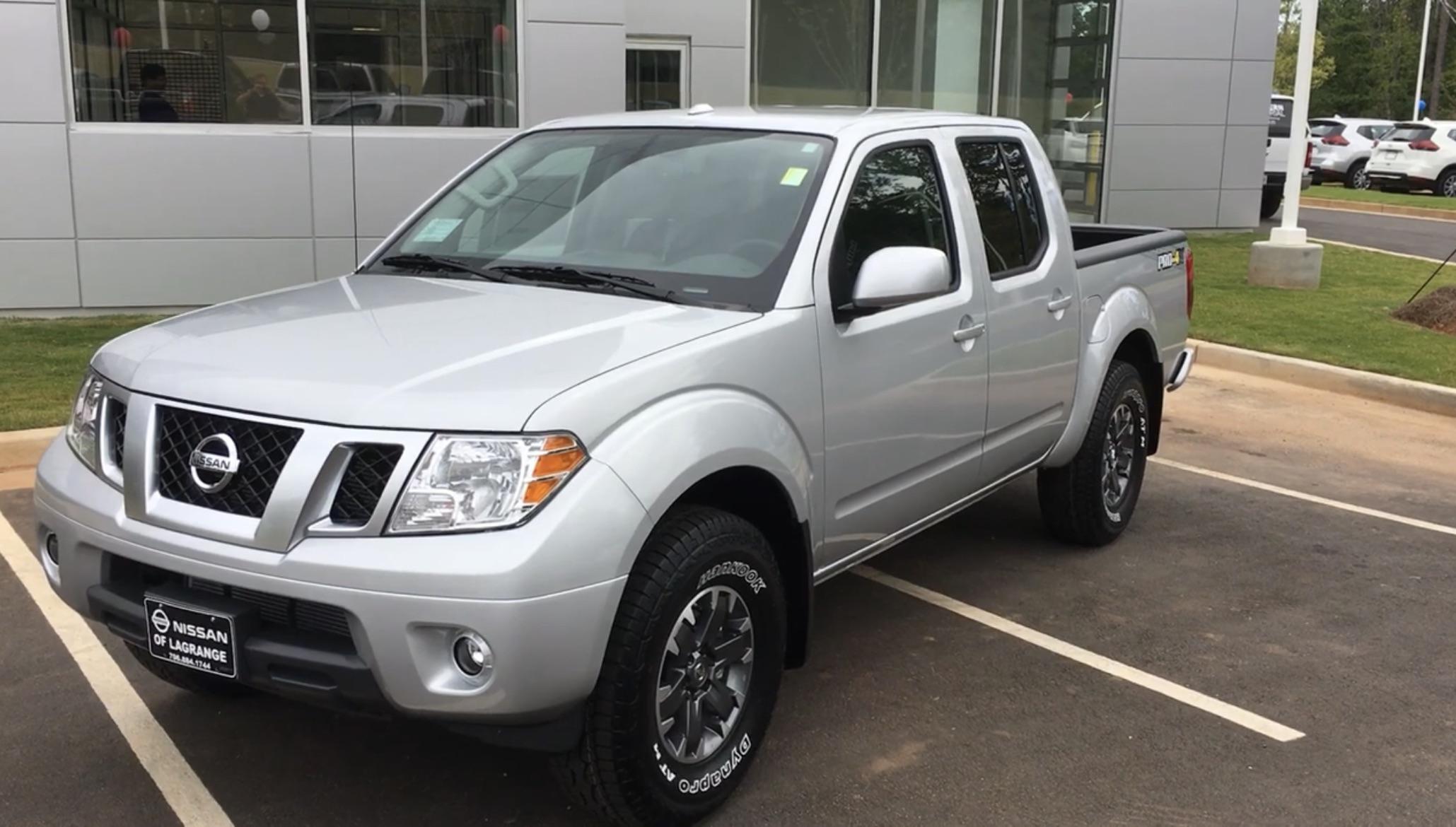
While it’s not the absolute cheapest overall, its upkeep over the first ten years remains relatively affordable.
That claim is supported by NHTSA data, which shows only one recall for the 2017 model year.
Still, it’s a significant one it indicates that the ignition system might be affected by the weight on the key ring, which could cause the engine to shut off during high-stress driving conditions.
- Average Yearly Maintenance Cost: $284 (RepairPal)
- Est. Maintenance Cost During The First 10 Years: $8,854 (CarEdge)
- Total Recalls: 1
4. 2007 Toyota Tundra
KBB Fair Purchase Price: $9,257
The Toyota Tundra first hit the market in 1999. While the second-generation model was sold for seven years, it’s still considered a favorite among those who want to stick with a V8 engine.
It might not have the highest towing capacity compared to others in its class offering just 10,000 pounds but it remains an extremely budget-conscious option at just $9,257.
Known for their durability, these trucks are easily capable of lasting 250,000 miles or more. For a full-size pickup, the Tundra is also quite affordable to maintain.
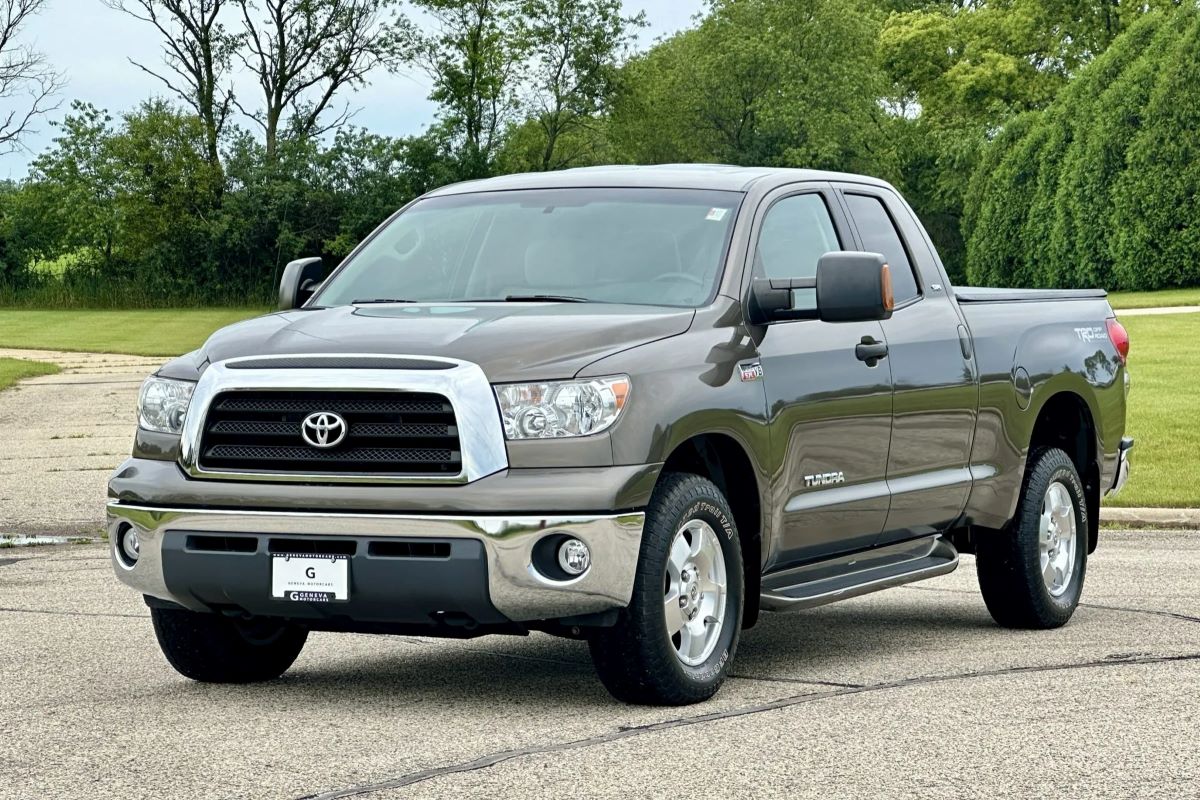
According to RepairPal, annual maintenance costs are under $500, and CarEdge reports that the estimated maintenance cost over the first ten years is just below $7,000.
Available in both single and double cab configurations, the 2007 Tundra is also well-regarded for its off-road performance.
- Average Yearly Maintenance Cost: $450 (RepairPal)
- Est. Maintenance Cost During The First 10 Years: $6,923 (CarEdge)
- Total Recalls: 8
Also Read: 5 Trucks With Bulletproof Engine Mounts and 5 That Constantly Fail
3. 2007 Honda Ridgeline
KBB Fair Purchase Price: $7,464
The 2007 Honda Ridgeline may seem like an unusual candidate for a work truck, but it continues to be a popular choice.
What sets it apart is its sedan-like ride and interior comfort, combined with the capabilities of most mid-size trucks and SUVs. It comes equipped with a single 3.5-liter V6 engine option and can tow up to 5,000 pounds.
Additionally, it has been recognized as one of the first trucks to introduce a unique bed cargo system, adding to its practical appeal.

With a KBB fair purchase price of just $7,464, the 2007 Ridgeline is an undeniable bargain. Its annual maintenance cost is relatively low at around $401, and it falls right in the middle of the pack in terms of estimated maintenance expenses over the first ten years.
While the number of recalls totals seven, many of those issues should have already been addressed in existing 2007 models.
- Average Yearly Maintenance Cost: $401 (RepairPal)
- Est. Maintenance Cost During The First 10 Years: $8,557 (CarEdge)
- Total Recalls: 7
2. 2007 Ford Ranger
KBB Fair Purchase Price: $6,068
No list of affordable and reliable trucks would be complete without mentioning the Ford Ranger. The Ranger wasn’t always the nearly full-size pickup truck we recognize today.
It originally launched as a mid-size truck, though compared to today’s Maverick, it could easily be seen as compact. Despite its smaller stature, it didn’t skimp on capability when properly equipped, it could tow an impressive 7,200 pounds.
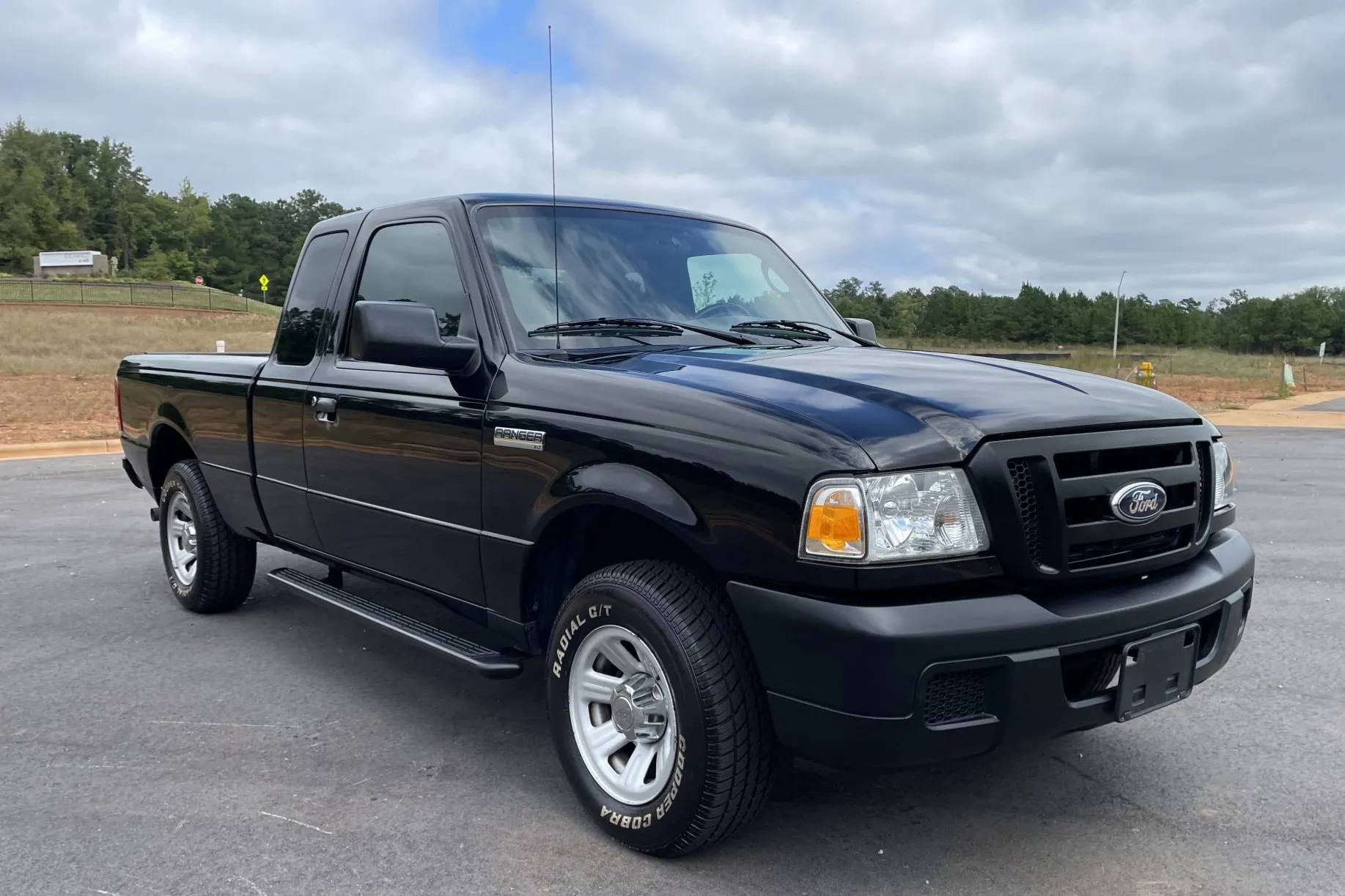
The Ranger lands in second place due to its exceptionally low purchase price just $6,068, according to KBB.
Surprisingly, its maintenance costs over ten years and average annual upkeep are a bit higher than some might expect. However, it holds up well in terms of recalls, with only four reported for this model year.
- Average Yearly Maintenance Cost: $485 (RepairPal)
- Est. Maintenance Cost During The First 10 Years: $10,510 (CarEdge)
- Total Recalls: 4
When a company makes adjustments to a car, the result is often just a slightly improved version of the same basic model. I expected the “all-new” Ranger to be a marginally better iteration of the same old vehicle, but it’s actually a much more competent machine than its predecessor.
In terms of appearance, it’s not the most cutting-edge pickup on the market, but at least it still looks like a pickup truck, rather than a luxury SUV with the back chopped off for carrying trendy accessories.
There’s also been a concerted effort to enhance the interior, and while it’s certainly a step up from the outdated cabin of the old Ranger, Ford has gone a bit overboard with the silver-painted plastics and flashy graphics. That said, they’ve nailed the fundamentals—things like the driving position, the seats, and the placement of the major controls have all been redesigned to be more ergonomic.
Unfortunately, they didn’t choose to eliminate the umbrella handle handbrake, and the rear seating is still far from ideal. In fact, the cabin feels relatively cramped compared to newer competitors, probably because the Ranger is narrower overall. However, the upside is that it doesn’t feel like a massive vehicle in urban settings and will comfortably fit in your driveway, which is a definite bonus.
When it comes to driving, the Ranger has been transformed. The previous version was one of the worst driving experiences I’ve had, but the new model has made significant strides.
The rack-and-pinion steering is light yet fairly precise, so it no longer feels like you’re wrestling with a runaway piano. The ride is also much improved, no longer harsh enough to make you want to get out and take a swing at it.
The gearbox, though long-winded, feels positive, and the pedals are light and well-positioned. Even the 2.5-litre turbo diesel engine, while not as smooth as a V8 TDi, performs adequately for everyday driving without being overly loud. We don’t have specific performance or fuel economy figures, but with 143bhp and 226Nm of torque, it feels about average when compared to other pickups.
The Ranger is actually a surprisingly pleasant vehicle to drive overall—unless you get a bit too enthusiastic with the throttle on a wet roundabout. I didn’t take it off-road, but I did test it out in the Dublin Mountains on the one snowy day this winter.
With all four wheels engaged and low-range mode on, the Ranger felt unstoppable and was surprisingly easy to slide sideways. While I may have been the center of attention that day, the rest of the time I was less impressive.
The Ranger doesn’t make a bold style statement, it’s a bit rough around the edges compared to rivals, and it’s not exactly cheap at €34,665 for the Thunder model (which includes ABS, 16” alloys, parking sensors, electric windows, locks, and mirrors, six airbags, leather trim, and air conditioning).
But if you’re an owner-operator in need of a workhorse, the Ford Ranger could be a solid choice. It’s tough and durable (as American-made pickups often are), reasonably comfortable, and full of character. The Ranger reminds me of a trusty old pair of pliers—nothing fancy, no gel handles, but it feels reliable and always gets the job done. Simple, dependable, and honest, and I kind of like it for that.
1. 2007 Chevrolet Colorado
KBB Fair Purchase Price: $4,901
Taking the top spot as the most budget-friendly work truck to both buy and maintain is the 2007 Chevrolet Colorado.
According to KBB, you can get your hands on one for just $4,901. This model was offered in both single and crew cab configurations and came with three different powertrain choices, including two V6 engine options.
This particular year stands out with a minimal number of recalls just two in total. In fact, the Colorado line as a whole tends to average only one or two recalls over the years.
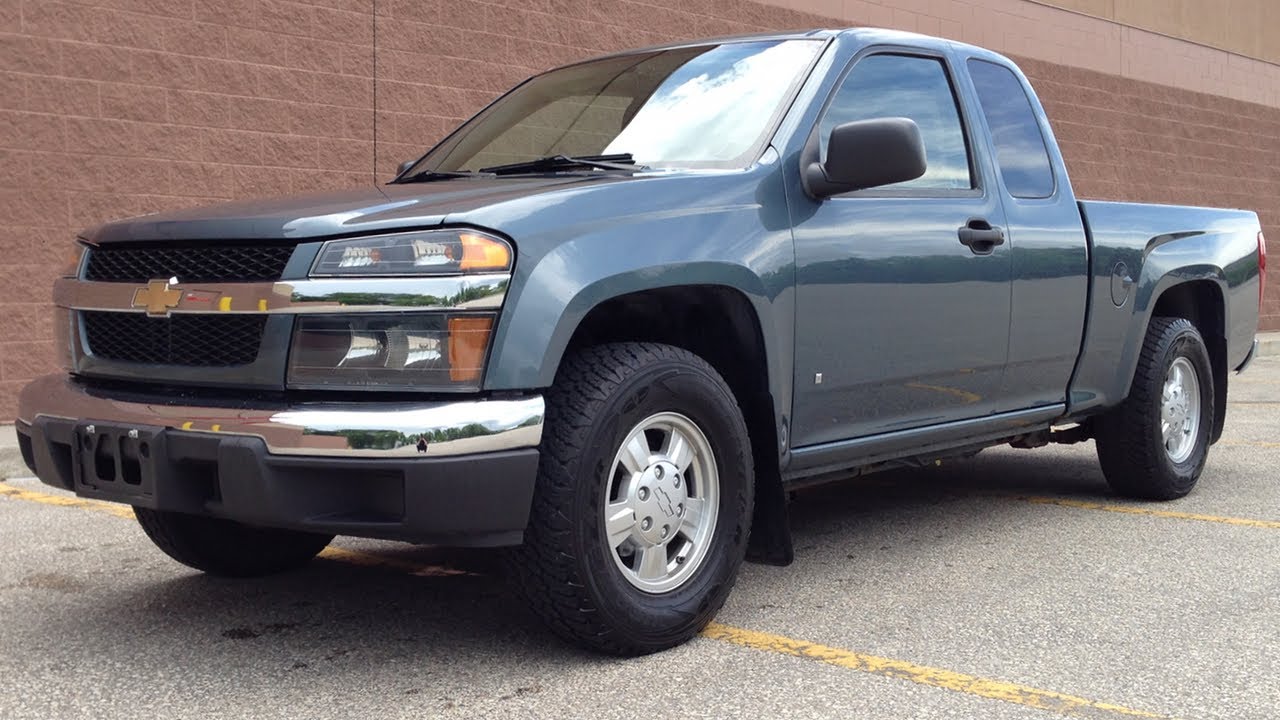
It also scores well for annual maintenance, costing only $412 according to RepairPal. While the maintenance cost during the first ten years is on the higher side, it’s worth noting that the 2007 model is now well beyond that ten-year window.
- Average Yearly Maintenance Cost: $412 (RepairPal)
- Est. Maintenance Cost During The First 10 Years: $10,368 (CarEdge)
- Total Recalls: 2
Trucks With Sky-High Shop Bills
Since the early 1900s, American farmers and business owners have been purchasing cab-and-chassis vehicles and equipping them with custom-built crates or flatbeds.
The result was a cost-effective and versatile vehicle that could serve both work-related needs and family outings on Sundays. This marked the beginning of America’s enduring relationship with the pickup truck.
Today, pickup trucks are the second most popular vehicle type in the United States by sales volume, trailing only behind crossover SUVs.
For over 40 consecutive years, the best-selling vehicle in the country has been a pickup: the Ford F-Series. Pickup trucks have come a long way since the Ford Model TT first left the production line in 1917.
Modern pickups are more powerful, loaded with advanced technology, and significantly more expensive than their early predecessors. However, with these advancements has come an increase in repair and maintenance costs.
Compared to cars, pickup trucks are larger, typically used for more demanding tasks than SUVs, and often feature high-compression diesel engines that demand more frequent oil changes and component replacements.
Data from CarEdge reveals that the average sedan, driven 15,000 miles annually over its first 10 years, will rack up approximately $7,000 in repair and maintenance costs during that period about $700 per year. By comparison, the average crossover or SUV will require around $910 annually.
In contrast, light trucks including compact models and half-ton pickups like the Ford F-150 average $1,030 per year in repair and maintenance over the first decade.
For heavier-duty trucks, such as the 1-ton Ford F-350 or the Chevrolet Silverado 3500 HD, the annual cost jumps to an average of $1,430 during that same timeframe. According to this data, American pickup trucks top the list when it comes to maintenance expenses in their segment.
5th-Generation Ram 1500
$1,768 Annually for the First 10 Years
The Ram 1500 ranks as the most expensive light-duty pickup truck to maintain and repair over a 10-year ownership span.
Supporting this claim is the Ram 1500’s average annual repair and maintenance cost of $1,768, which is nearly 15% higher than that of the commercial-grade Ford F-450.
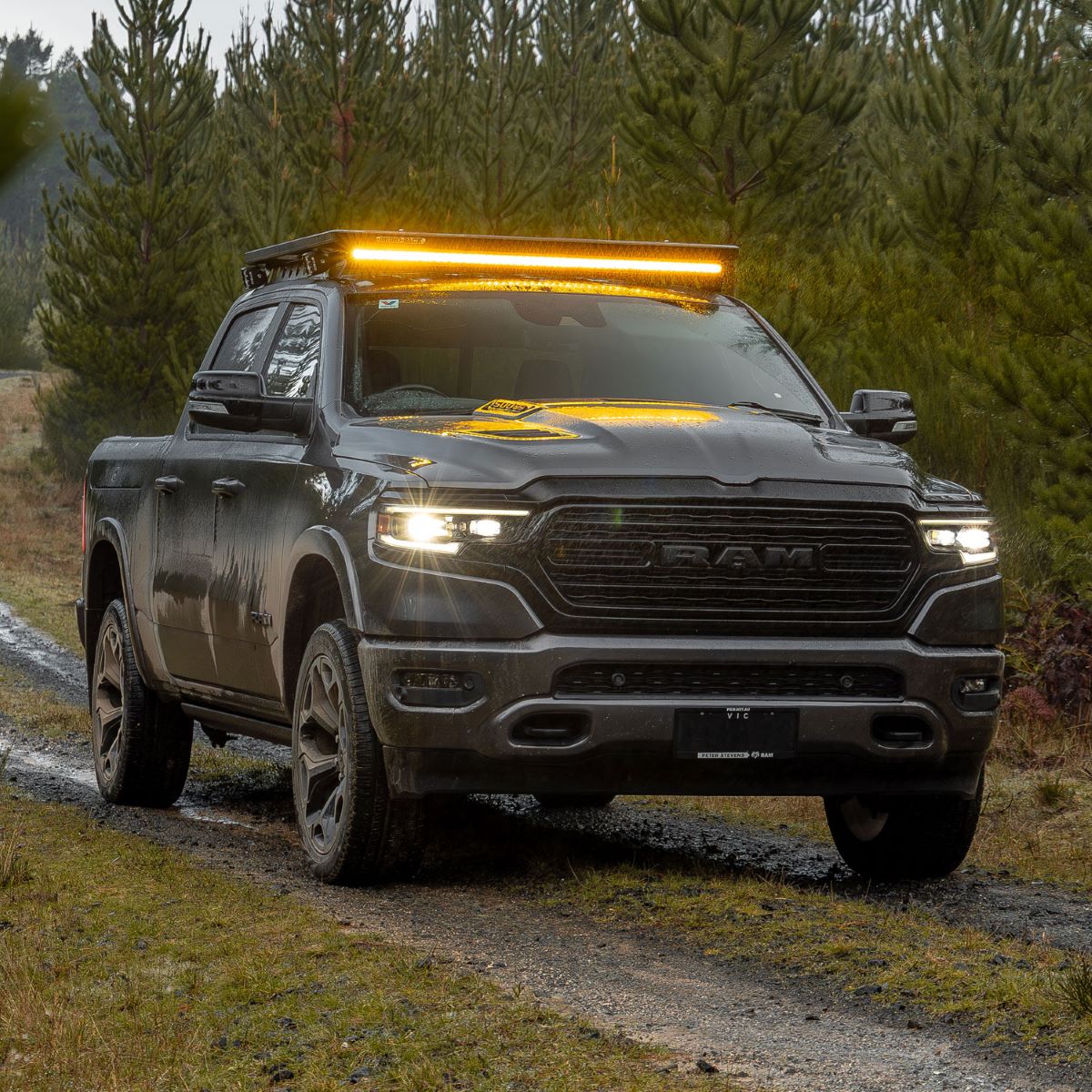
Throughout a decade of ownership, Ram 1500 owners can expect to spend approximately $10,500 on maintenance and $7,000 on repairs.
Additionally, there is a 54.8% probability that the Ram 1500 will require at least one major repair during that time. At the forefront of a shifting automotive landscape is the upcoming 2026 Ram 1500 Ramcharger. This truck doesn’t conform to the traditional gasoline-powered formula, nor does it fully embrace a purely electric setup.
Instead, it adopts a hybrid approach that merges both systems. Initially, the Ramcharger operates on electric power. Once the battery charge drops, a gasoline-fueled V6 engine activates—not to power the wheels directly, but to function as a generator that replenishes the battery.
Under optimal conditions, the Ramcharger is projected to offer up to 690 miles of total driving range. That figure surpasses what most current electric trucks deliver, positioning it as an attractive option for consumers who remain hesitant about EVs due to range anxiety and the still-developing charging infrastructure.
When it comes to cost, Kuniskis was straightforward. The biggest hurdle separating gas-powered trucks from electrified ones is the battery. “REV was a 229-kilowatt-hour (kWh) battery. Let’s pick $100 per kWh just to make the math easy. That’s a $23,000 battery,” he explained. “The standard range REV has a 168 kWh battery. That’s a $17,000 battery.”
In contrast, the Ramcharger is equipped with a smaller 92 kWh battery. From day one, the cost basis is going to be anywhere from $8,000 to $14,000 less than those other options. And that’s at $100. If you’re over $100, the cost basis is even better.”
Ram’s broader vision includes cutting battery costs down to $50 per kWh. While some automakers claim they’ve already achieved sub-$100 levels, it is noted that Ram hasn’t reached that threshold just yet.
Also Read: 5 SUVs That Maintain High MPG Over Time and 5 That Become Gas Hogs
4th-Generation Chevrolet Silverado 3500 HD
$1,469 Annually Over the First 10 Years
The Chevrolet Silverado 3500 HD stands as the 1-ton workhorse in Chevy’s pickup truck lineup. Outfitted with the right hardware—including a dual rear wheel setup and the renowned 6.6-liter Duramax diesel engine delivering 910 lb-ft of torque—the 2023 Silverado 3500 HD is capable of reaching a maximum payload capacity of 7,442 pounds and a class-leading 5th-wheel towing capacity of up to 36,000 pounds.
The starting price for a new Chevy Silverado 3500 HD is currently $41,700. However, owners should be prepared to spend more than a third of that amount—$14,686—for repair and maintenance costs over the first 10 years of ownership. Of that total, approximately $11,000 will go toward maintenance services, while the remaining $4,000 will be attributed to repairs.
When it comes to towing and hauling heavy loads on a regular basis, there is no substitute for trucks like the 2025 Chevrolet Silverado HD. This truck has proven itself to be a true workhorse, and the Silverado HD lineup now includes off-road variants such as the ZR2 and the Trail Boss.
A capable 6.6-liter gasoline V-8 engine comes standard, but opting for the 6.6-liter turbo-diesel V-8 dramatically transforms the Silverado’s performance, allowing it to reach a maximum towing capacity of 36,000 pounds.
Both the gas and diesel engines are paired with an Allison 10-speed automatic transmission. Buyers have the option of rear- or four-wheel drive, and upgrading to a dual rear axle further enhances its towing and hauling capabilities.
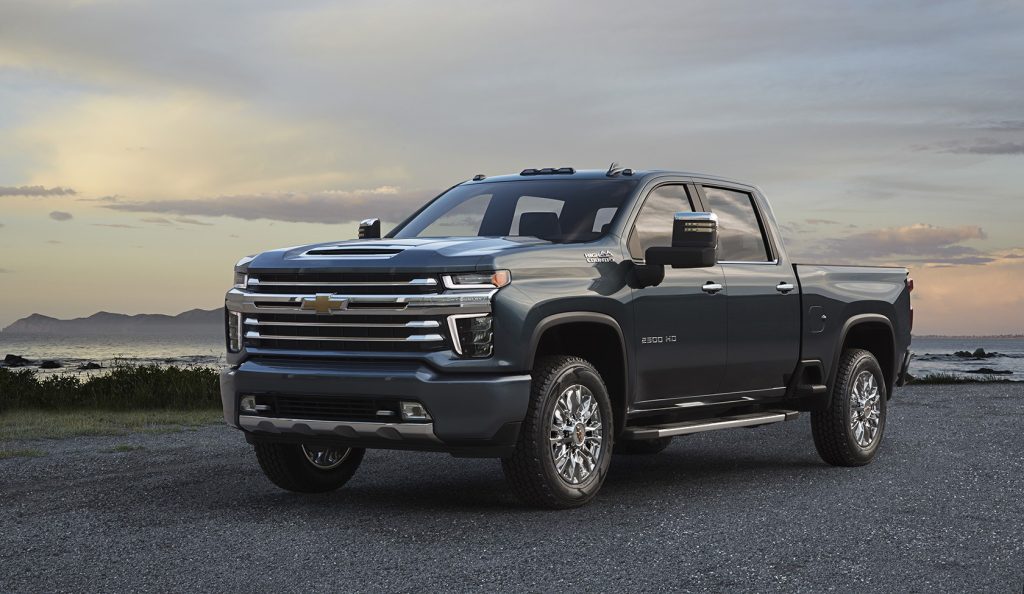
While the High Country trim is Chevrolet’s most feature-rich version, its styling is more utilitarian compared to the luxury-focused interiors found in Ford Super Duty and Ram HD models. Nonetheless, the Silverado HD incorporates a wide range of features designed to ease the challenges of towing, including adaptive cruise control tuned for trailering and multiple camera views to assist with hitching.
The Silverado HD lineup expands in 2025 with the addition of the Trail Boss package. Based on the LT and LTX trims, the Trail Boss introduces an off-road suspension, unique 20-inch wheels, and cosmetic details specific to the trim. However, it stops short of the Silverado 2500HD ZR2’s full off-road capabilities.
Other updates across the lineup include adaptive cruise control becoming standard on the High Country trim, a new Black-Out package available for the Custom, updated 20-inch wheels for the Midnight Edition, and optional front and rear parking sensors for the Work Truck, Custom, and LT trims.
Pricing for the 2025 Chevrolet Silverado 2500HD and 3500HD starts at $47,495 and can climb up to $75,095 depending on trim level and selected options. The base Work Truck trim starts at $47,495, while the Custom comes in at $50,695.
4th-Generation Ford F-350 Super Duty
$1,497 Annually Over the First 10 Years
The Ford F-350 is classified as a 1-ton truck and is available in either a single-rear-wheel (SRW) or dual-rear-wheel (DRW) configuration, depending on the buyer’s needs for towing, hauling, or even purely aesthetic preferences. When equipped with the 7.3-liter V8 engine and DRW setup, the F-350 delivers a best-in-class payload capacity of 7,647 pounds.
Alternatively, opting for the 6.7-liter high-output Powerstroke engine allows the F-350 to achieve a conventional towing capacity of up to 24,800 pounds and a 5th-wheel towing capacity of 32,900 pounds.
Throughout its first 10 years on the road, a new Ford F-350 is expected to incur approximately $14,970 in total repair and maintenance costs. Much like its smaller 3/4-ton sibling, roughly one-third of these expenses will be incurred during the first five years, with the majority coming during years six through ten.
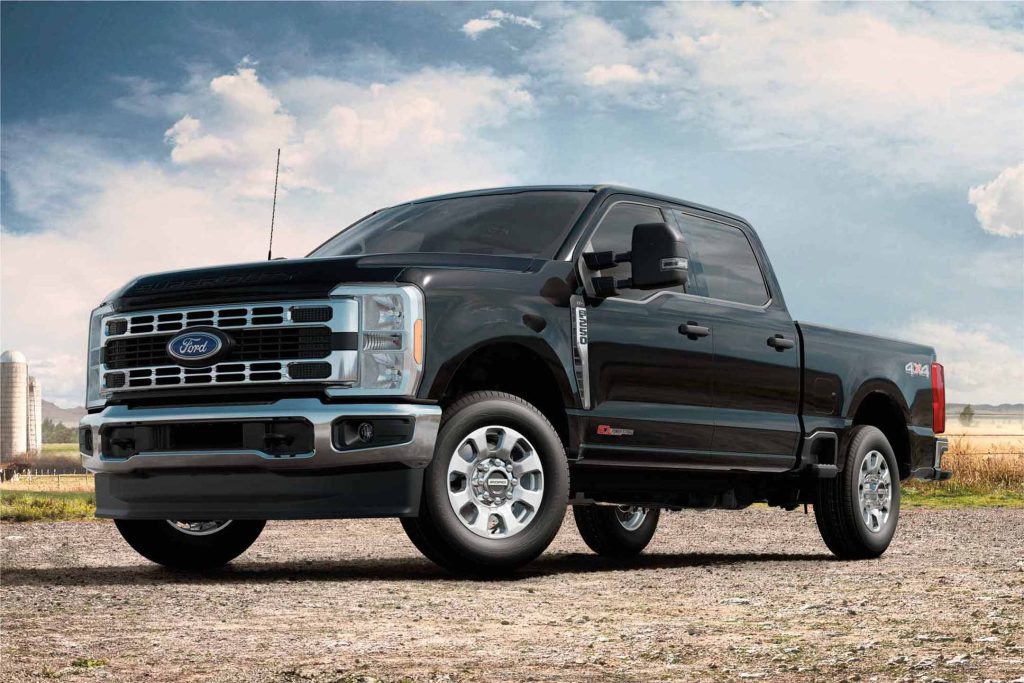
The Ford F-350 Super Duty is a truck built for those who need to tow massive rigs that exceed the capabilities of the smaller F-150 and F-250 models, with the current F-350 generations capable of towing over 32,000 pounds.
The first generation of the Ford F-350 Super Duty debuted in 1998 as a 1999 model, designed with high-torque, large-capacity engines, always offering a turbo-diesel option. It was available in various body configurations, including both 2WD and 4WD options, and with single or dual rear wheels.
After the first generation’s nine-year production run, the F-350 Super Duty underwent its first major redesign in 2008, introducing a stronger frame, a more comfortable ride, and new engine options. Just three years later, a major update of the previous model was released as the third generation, marked by the introduction of a new internal code, P473, and the elimination of manual transmissions.
The later years of the fourth generation, under the P558 code, would introduce the new Godzilla gas V8, which eventually replaced the Boss engine. In 2023, the fifth-generation F-350 Super Duty was launched as a completely redesigned model, featuring a 500-hp turbo-diesel engine for the first time.
The all-new fifth-generation Ford F-350 Super Duty debuted with a redesigned structure, incorporating a 6.8L version of the Godzilla gas V8 engine with 400 horsepower, replacing the previous 6.2L Boss V8.
Additionally, this generation introduced an upgraded high-output version of the 6.7L PowerStroke turbo-diesel V8 engine, delivering a class-leading 500 horsepower and 1,200 lb-ft of torque, setting new standards in the market.
4th-Generation Ford F-550 Super Duty
$1,484 Annually Over the First 10 Years
With a maximum gross vehicle weight rating (GVWR) of 19,500 pounds, the Ford F-550 falls under the classification of a class-5 commercial vehicle.
Its capabilities make it especially well-suited for businesses and government entities involved in construction or utility services. The F-550 boasts an outstanding maximum payload capacity of 12,190 pounds and an impressive 5th-wheel towing capacity of up to 34,900 pounds.
Over its first decade in service, a brand-new Ford F-550 is projected to accumulate approximately $14,840 in total repair and maintenance costs.
The Ford Super Duty F-550 is a powerhouse among commercial vehicles, renowned for its impressive specifications designed to meet the tough demands of heavy-duty hauling and towing. As a leader in the heavy-duty truck market, the F-550 has solidified its reputation as the go-to option for businesses and professionals who need reliable, high-performance, and versatile trucks.
This chassis cab offers a variety of customization options, including powerful engine configurations like the 6.7L Power Stroke® V8 Turbo Diesel and the 7.3L V8 gasoline engine. These powertrains provide exceptional torque and horsepower, ensuring the F-550 can easily tackle challenging terrains and demanding towing tasks.
A standout feature of the F-550 is its remarkable towing capacity, which can reach up to 37,000 pounds, making it ideal for a wide range of commercial applications such as construction, landscaping, emergency services, and municipal operations. The combination of powerful engines, robust chassis, and advanced towing technologies makes this truck a reliable choice for handling even the heaviest trailers and equipment.
Additionally, the F-550 comes equipped with features like the available Trailer Tow Package, which includes a heavy-duty trailer hitch, wiring harness, and trailer brake controller to ensure a seamless and efficient towing experience. The F-550 also offers a range of customizable body configurations, allowing businesses to tailor the truck to their specific needs.
Whether it’s a service body for tradespeople, a rugged dump bed for construction and landscaping, a crane body for lifting heavy equipment, or a stake bed for transporting irregularly shaped cargo, the F-550 chassis cab provides a versatile and reliable platform.
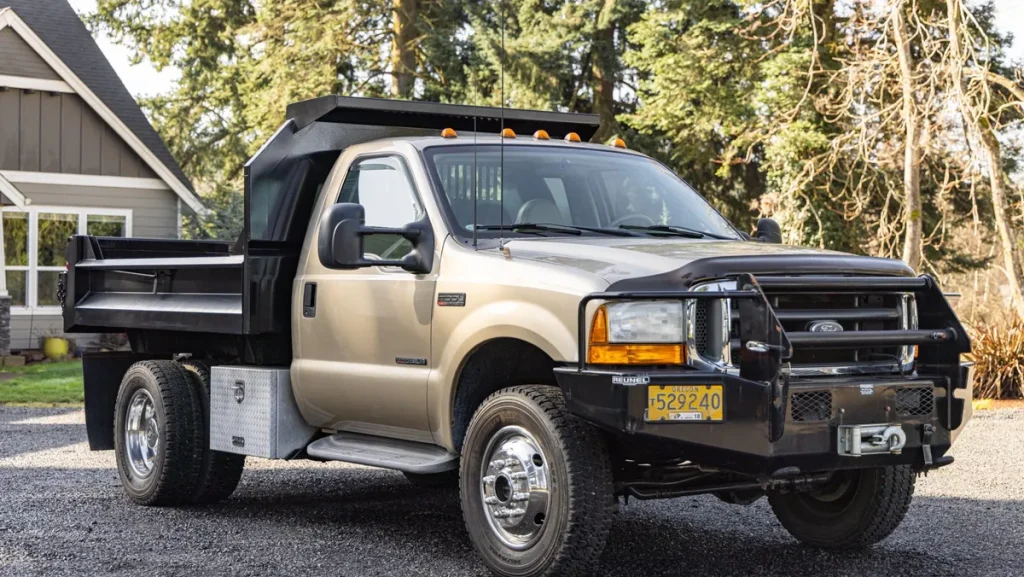
Furthermore, the F-550 features a heavy-duty frame and suspension system that ensures stability and durability, even when carrying heavy loads or navigating tough terrain. With a maximum payload capacity of up to 12,300 pounds, the F-550 can easily handle a wide variety of cargo and equipment.
To enhance connectivity, the F-550 comes with the latest technology, including the SYNC® 4 infotainment system and a suite of advanced driver-assistance features. The vehicle’s powertrain options include the 6.7L Power Stroke® V8 Turbo Diesel engine, which delivers 475 horsepower and 1,050 lb-ft of torque, and the 7.3L V8 gasoline engine, providing 430 horsepower and 475 lb-ft of torque.
Both engine options are paired with a TorqShift® 10-speed automatic transmission, ensuring smooth power delivery, even under heavy loads. With all these features combined, the Ford Super Duty F-550 is a versatile, powerful, and reliable solution for businesses that need uncompromising performance and customization options in their commercial vehicles.
1. 5th-Generation Ram 3500
$2,584 Annually for the First 10 Years
At the top of the list for the most expensive pickup trucks to maintain is the Ram 3500. As a 1-ton truck, it carries the highest 10-year repair and maintenance cost among all vehicles sold in the U.S., mass-market or luxury, at a whopping $25,840.
To put that in perspective, the money spent on maintaining a Ram 3500 could buy a brand-new base-model Toyota Corolla with some money left over.
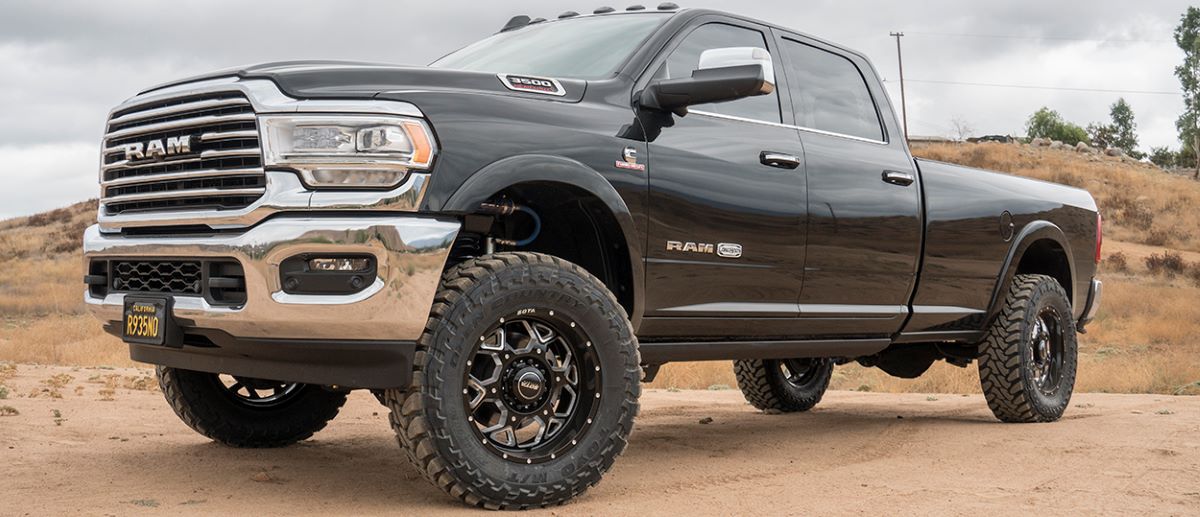
Among all models in the Ram truck lineup, the Ram 3500 stands out as the most expensive to maintain. This is likely due to its unmatched utility combined with its ability to still deliver passenger comfort, upscale interior features, and an appealing exterior design.
The interior of the Ram 3500 can range from simple and cozy to impressively spacious and well-appointed, depending on the cabin option chosen. Regardless of configuration, the dashboard is large and robust, complemented by a matching steering wheel, which houses most of the physical buttons.
Some control dials are also present, allowing for easier access to essential features without the need to interact with the small five-inch screen. In the upper trims, a significantly larger display offers a major upgrade, accompanied by higher-quality materials. While there are still some lower-cost elements, the overall build remains sturdy and functional.
The amount of interior space you get in the Ram 3500 largely depends on the cabin configuration. Both the driver and front passenger enjoy ample room, with over 40 inches of legroom in their respective areas.
The Crew Cab offers additional seats in the second row, which also provide generous legroom, though headroom is about an inch less than in the front. Only the top three trims provide access to the Mega Cab, which improves rear headroom slightly and significantly enhances rear legroom, offering an exceptionally spacious experience.
In the Regular Cab, there is only a small amount of space inside, so you’ll likely rely on the cargo bed to store your groceries, luggage, or work tools. The Regular and Crew Cabs offer the option of an eight-foot or 6-foot-4 bed, while the Mega Cab is only available with the shorter bed.
Depending on the configuration, the Ram 3500 can accommodate between 57.5 and 74.7 cubic feet of cargo. Each trim comes with a specific payload capacity, but when optimally configured, the truck can haul up to 7,680 lbs.
For smaller items, the dashboard includes a glove compartment, and there’s a cubby located under the central armrest. In upper trims with individual front seats, a proper center console connects to the dashboard and features a small tray designed for storing smartphones.

